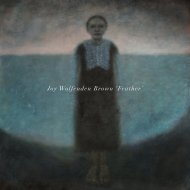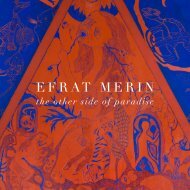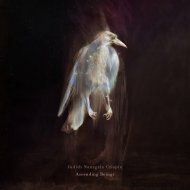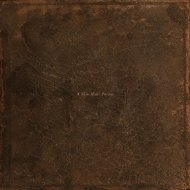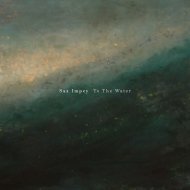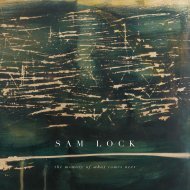Rebecca Harper 'The Waters of Dwelling'
Illustrated online publication for solo exhibition 'The Waters of Dwelling' by Rebecca Harper at Anima Mundi
Illustrated online publication for solo exhibition 'The Waters of Dwelling' by Rebecca Harper at Anima Mundi
Create successful ePaper yourself
Turn your PDF publications into a flip-book with our unique Google optimized e-Paper software.
<strong>Rebecca</strong> <strong>Harper</strong><br />
The <strong>Waters</strong> <strong>of</strong> Dwelling<br />
<strong>Rebecca</strong> <strong>Harper</strong><br />
The <strong>Waters</strong> <strong>of</strong> Dwelling
“They both listened silently to the water,<br />
which to them was not just water, but the<br />
voice <strong>of</strong> life, the voice <strong>of</strong> Being, the voice <strong>of</strong><br />
perpetual Becoming.”<br />
Hermann Hesse, ‘Siddhartha’
3
4
Introduction<br />
Anima Mundi are delighted to present<br />
‘The <strong>Waters</strong> <strong>of</strong> Dwelling’ by <strong>Rebecca</strong><br />
<strong>Harper</strong>, her second solo exhibition at<br />
the gallery incorporating small and<br />
large scale paintings and objects.<br />
Made over the past two years, works<br />
address both self-imposed ritual and<br />
consolation, and perform as a flowing<br />
marker for both endings and beginning<br />
resultant from pr<strong>of</strong>ound and ongoing<br />
change, loss, and discovery. <strong>Harper</strong><br />
states “As many people have, I’ve been<br />
dealing with various types <strong>of</strong> fear and<br />
loss in my life lately, consequently I’ve<br />
been reflecting and viewing the world in<br />
a way that I hadn’t previously. This body<br />
<strong>of</strong> work, made primarily during lockdown,<br />
became much more introspective as<br />
our worlds grew smaller. Through loss<br />
and grief, the search for meaning and<br />
the need for solace grew greater than<br />
ever. A pr<strong>of</strong>ound need for physical and<br />
emotional connection, not just to one<br />
another, but also to the natural world,<br />
became all the more significant.”<br />
The exhibition manifests as a reflection<br />
<strong>of</strong> the artists immediate environment,<br />
presented as if the stage <strong>of</strong> a play,<br />
inhabited with a cast <strong>of</strong> familiar<br />
characters that rotate around the<br />
outskirts <strong>of</strong> her childhood riverside<br />
home, where she has been isolating<br />
with her parents, sibling, and partner.<br />
The characters are not portraits as such,<br />
more like actors that play a role, filling<br />
in for particular people on stage. This<br />
set reflects the psychological locations<br />
that she inhabits and those that<br />
inhabit her.<br />
For <strong>Harper</strong>, making these paintings<br />
through a deeply personal lens became<br />
an opportunity to examine a period <strong>of</strong><br />
rapid global change, acknowledging<br />
an individual and worldly capacity to<br />
live at the edge <strong>of</strong> the precipice. One<br />
which involves all <strong>of</strong> us dealing with<br />
the extreme challenges presented to<br />
us through the ensuing uncertain and<br />
unsettled. She references what Freud<br />
refers to as the ‘Death <strong>of</strong> Eros’ where<br />
the great undercurrents <strong>of</strong> human<br />
experience are hopelessly locked in a<br />
perpetual state <strong>of</strong> battle, with opposing<br />
forces constantly at play. We all must<br />
attempt to steer our ship and avoid<br />
4
drowning in the complex dichotomous<br />
waters <strong>of</strong> freedom and constraint,<br />
strength and vulnerability, kindness<br />
and hate, constructive and destructive,<br />
dark and light and ultimately life<br />
and death. Attempting to not become<br />
overwhelmed, avoiding the deluge, as<br />
the tide rises.<br />
In a prosaic sense the river became<br />
symbolic <strong>of</strong> the artists home, located<br />
at the water’s edge, but in a more<br />
pr<strong>of</strong>ound sense, as the exhibition<br />
title alludes, it also carries wider and<br />
deeper references. We see rivers flow,<br />
clouds rain, and rainwater dissipate,<br />
nourishing and accommodating us and<br />
other objects, and on a more personal<br />
level we see tears fall and water slip<br />
through fingers. The ritualistic nature<br />
<strong>of</strong> water helps to cleanse, heal, bless,<br />
and purify, and through this it connects<br />
us to ourselves, others, to life and to<br />
earth – it is a unifying element. <strong>Harper</strong><br />
says “I’ve been thinking about our acts<br />
<strong>of</strong> effortless surrender to the natural<br />
cycles <strong>of</strong> the world. We are reminded<br />
that the water accommodates us, we<br />
are supported, we are not resisted, it<br />
sustains us, cleanses us and we are<br />
weightless to it.”<br />
Much like in the ideas <strong>of</strong> the Tao in<br />
Chinese philosophy, the route <strong>of</strong> water<br />
explores alignment with the rhythms <strong>of</strong><br />
the elements both within and outside<br />
the body. The ebb and flow <strong>of</strong> ‘The<br />
Rivers <strong>of</strong> Dwelling’ inspires immersion<br />
for both loosing and finding the self<br />
again as part <strong>of</strong> a greater whole. We<br />
become a part <strong>of</strong> the water as the water<br />
is a part <strong>of</strong> us, conjoining our inner and<br />
outer physical worlds in metaphysical<br />
unity. There is a surrendering to nature<br />
as an opening for wider thought and a<br />
deeper searching for connection.<br />
The main protagonist <strong>of</strong> many <strong>of</strong> these<br />
paintings, has become a kind <strong>of</strong> guiding<br />
spirit <strong>of</strong> self, an avatar for the artist<br />
in a constant stream <strong>of</strong> uncertainty, as<br />
<strong>Harper</strong> says “she’s quite reliable and<br />
she turns up again and again when I<br />
need her, this reoccurring blond figure,<br />
the guiding spirit <strong>of</strong> me, is a reminder<br />
<strong>of</strong> the cycles <strong>of</strong> life, strength and<br />
rebirth: she is still very present and<br />
helps to carry the load.”<br />
5
6
Weeping<br />
acrylic on canvas, 180 x 140 cm | 71 x 55 in<br />
7
Willow Wallow<br />
acrylic on canvas, 170 x 210 cm | 67 x 83 in<br />
8
9
101
The Watch Tower<br />
acrylic on canvas, 180 x 150 cm | 71 x 59 in<br />
11
The Loss <strong>of</strong> Eros<br />
acrylic on canvas, 180 x 210 cm | 71 x 83 in<br />
12
13
14
Spellbind Reflecting<br />
acrylic on canvas, 102 x 79 cm | 40 x 31 in<br />
15
Until the Mud Settles and the Water is Clear, I Watch My Back<br />
acrylic on canvas, 50 x 40 cm | 20 x 16 in<br />
16
17
‘The <strong>Waters</strong> <strong>of</strong> Dwelling’ by Hettie Judah<br />
The figures in <strong>Rebecca</strong> <strong>Harper</strong>’s<br />
recent paintings are caught between<br />
flowing water and radiant light. These<br />
earthly beings, pictured within a vivid<br />
and otherworldly spectrum <strong>of</strong> colour,<br />
perform as proxies for the artist, her<br />
mother, brother and partner. During<br />
15 months spent at her childhood<br />
home on the Thames, the river has<br />
become a central presence in <strong>Harper</strong>’s<br />
sketches and paintings, and supplied a<br />
symbolic vocabulary.<br />
The works are united by the visual rhythm<br />
<strong>of</strong> floating crosses: the “vibrations”<br />
produced by “the infinite combinations<br />
<strong>of</strong> colour” described by Sonia Delaunay.<br />
They suggest the sparkle <strong>of</strong> light on<br />
water, while veiling the paintings in<br />
a grid <strong>of</strong> colour. A family <strong>of</strong> swans<br />
reflected in water is reduced to a series<br />
<strong>of</strong> doubled forms, puzzling and abstract.<br />
Bursts <strong>of</strong> prismatic light appear in<br />
rainbows and concentric ripples<br />
on the water, recalling works by<br />
William Blake and Evelyn De Morgan<br />
(both, for a period, followers <strong>of</strong> the<br />
mystic Emanuel Swedenborg) in<br />
which the chromatic spectrum is<br />
associated with divine light and the<br />
spiritual realm.<br />
The heightened, visionary tone <strong>of</strong> ‘The<br />
<strong>Waters</strong> <strong>of</strong> Dwelling’ captures the peculiar<br />
mood <strong>of</strong> the last year: both the universal<br />
sensation <strong>of</strong> disjunction, and the specific<br />
emotional circumstances <strong>of</strong> this group.<br />
In Rivers <strong>of</strong> Woe an embracing couple<br />
appears on the shore, their backs turned<br />
like the melancholy figures in Edvard<br />
Munch’s Two People. The Lonely Ones<br />
(1899) – <strong>Harper</strong> denies us the spectacle<br />
<strong>of</strong> their unhappiness and we are closed<br />
<strong>of</strong>f from the scene. A similar distancing<br />
occurs in ‘What You Wished and Wished<br />
Away’ in which we see three figures<br />
18
from behind as they light candles in<br />
paper boats and send them into the river.<br />
<strong>Harper</strong> has spoken <strong>of</strong> water as an<br />
element <strong>of</strong> ritual purification, citing the<br />
Jewish Mikvah – a deep pool in which<br />
women traditionally immerse prior<br />
to marriage and which can also mark<br />
moments <strong>of</strong> transition or transformation.<br />
In Reconnecting with Eros and Rivers <strong>of</strong><br />
Dwelling the female character appears<br />
suspended blissfully in water alongside<br />
a barely visible man. Part <strong>Harper</strong>, she<br />
is also a hybrid <strong>of</strong> stylised references<br />
including Munch’s Madonna (1894-5),<br />
and the sensual, tragic Pre Raphaelite<br />
sisterhood (can you immerse a British<br />
woman in a river and escape Ophelia,<br />
with all her associations with the tragic<br />
and erotic?)<br />
Like the statuesque figure standing<br />
apart in Paula Rego’s The Dance (1988)<br />
<strong>Harper</strong>’s blonde woman <strong>of</strong>ten performs<br />
as an intermediary between the painting<br />
and the space beyond. In both The<br />
Loss <strong>of</strong> Eros and The Watch Tower,<br />
her direct gaze invites us into the<br />
theatre <strong>of</strong> action, to become part <strong>of</strong> an<br />
unfolding drama.<br />
Achelous and Suda are not lovers, but<br />
a character and his author: the shapeshifting<br />
river god <strong>of</strong> ancient Greece<br />
and a Byzantine encyclopaedia named<br />
for the writer Soudas. <strong>Harper</strong> aligns<br />
herself with a tradition <strong>of</strong> mystical<br />
and unreal riverscapes, from Classical<br />
antiquity to the emotionally turbulent,<br />
colour-saturated paintings <strong>of</strong> Marianne<br />
von Werefkin, Gabriele Münter and the<br />
Blue Rider group. Purifying, reflecting,<br />
supporting, the river acts as a boundary<br />
to the intimate world <strong>of</strong> the paintings,<br />
but it is also an emblem <strong>of</strong> continuity<br />
and endurance.<br />
19
Eternally Roiling<br />
acrylic on canvas, 180 x 210 cm | 71 x 83 in<br />
20
21
22
The Rivers <strong>of</strong> Dwelling<br />
acrylic on canvas, 180 x 220 cm | 71 x 87 in<br />
23
Reconnecting With Eros<br />
acrylic on canvas, 180 x 230 cm | 71 x 91 in<br />
24
25
26
Immersion<br />
acrylic on canvas, 180 x 170 cm | 71 x 67 in<br />
27
The Shell <strong>of</strong> the Sacred Water<br />
acrylic on canvas, 180 x 130 cm | 71 x 51 in<br />
28
29
30
Born From the Churning <strong>of</strong> the Ocean<br />
acrylic on canvas, 76 x 56 cm | 30 x 22 in<br />
31
<strong>Rebecca</strong> <strong>Harper</strong> in Conversation with Hettie Judah<br />
Hettie Judah: Did this series <strong>of</strong> paintings<br />
emerge quite distinctly from another body<br />
<strong>of</strong> work? Spellbind Reflecting looks like a<br />
transitional work into this new series: the<br />
blonde female figure is present, but she’s<br />
more human, less other worldly.<br />
<strong>Rebecca</strong> <strong>Harper</strong>: Yes, she is more human.<br />
Spellbind Reflecting was made in summer<br />
2020, along with What You Wished and<br />
Wished Away with the three figures<br />
teetering on the edge <strong>of</strong> the river, floating<br />
paper boats. They were catalysts for this<br />
series: they started to address self-imposed<br />
ritual and consolation as a marker for<br />
beginnings and endings when dealing with<br />
change and loss.<br />
Hettie Judah: It feels like this series <strong>of</strong><br />
paintings came to with a strong core <strong>of</strong><br />
themes already in place.<br />
<strong>Rebecca</strong> <strong>Harper</strong>: My work tends to manifest<br />
as a reflection <strong>of</strong> my environment, <strong>of</strong> the<br />
psychological locations that I inhabit and<br />
those that inhabit me. As if I was staging a<br />
play, I knew early on that I would explore<br />
a cast <strong>of</strong> familiar characters that would<br />
rotate around the outskirts <strong>of</strong> my childhood<br />
home in Old Isleworth, where I was locked<br />
down with my family and my partner.<br />
The location would be the set for and the<br />
parameters <strong>of</strong> my paintings.<br />
I saw it as an opportunity to examine<br />
a period <strong>of</strong> rapid change, when dealing<br />
with the challenges <strong>of</strong> loss, grief, and<br />
turbulence, through the uncertain and<br />
the unsettling. I had been thinking about<br />
Freud’s ideas <strong>of</strong> the great undercurrents<br />
<strong>of</strong> life being hopelessly locked in a state<br />
<strong>of</strong> battle, with opposing forces at play.<br />
The idea that what gives us existence and<br />
meaning in life doesn’t happen without<br />
all <strong>of</strong> life’s polarities: emotion and the<br />
life source that fuels us comes from<br />
strength from vulnerability, life from<br />
death, dark from light and so on.<br />
I’m always striving to play with<br />
polarities in my paintings, that tension is<br />
what drives many <strong>of</strong> my decisions in<br />
the making.<br />
Hettie Judah: Water plays a role in almost<br />
all <strong>of</strong> these paintings: it’s a constant<br />
presence in Old Isleworth, which is on the<br />
Thames, but does the water have symbolic<br />
qualities as well?<br />
32
<strong>Rebecca</strong> <strong>Harper</strong>: The river location is<br />
important because it’s symbolic <strong>of</strong> home.<br />
The title ‘The <strong>Waters</strong> <strong>of</strong> Dwelling’ carries<br />
references to the rain, the Mikvah 1 , the womb,<br />
the ritual <strong>of</strong> water that helps to cleanse,<br />
heal and purify the body, and through<br />
this it connects us to ourselves, others, to<br />
life, to earth. So the water has become<br />
symbolic <strong>of</strong> rebirth, lifecycles, courage,<br />
power, truth, strength and spirituality.<br />
The mood <strong>of</strong> the weather has played such<br />
a huge part in all <strong>of</strong> these paintings<br />
symbolically and is suggestive <strong>of</strong> events<br />
playing out. In this series <strong>of</strong> water based<br />
paintings, on a macro level we see rivers<br />
flow, clouds rain, and rainwater dissipate<br />
and accommodate us and other objects,<br />
and on a micro level we see tears fall,<br />
water slip through our fingers, and run<br />
through our thighs. The idea being that<br />
one who lives in accordance with nature<br />
does not go against the way <strong>of</strong> things.<br />
Hettie Judah: And the water performs<br />
as a supportive substance. In The Rivers<br />
<strong>of</strong> Dwelling and Reconnecting with Eros<br />
there’s a sense that the figures are lifted<br />
and carried by the water.<br />
<strong>Rebecca</strong> <strong>Harper</strong>: I’ve been thinking<br />
about our acts <strong>of</strong> effortless surrender to<br />
the natural cycles <strong>of</strong> the world. We are<br />
reminded that the water accommodates<br />
us, we are supported, we are not resisted,<br />
it sustains us, cleanses us, and we are<br />
weightless to it.<br />
Much like in the ideas <strong>of</strong> the Tao in<br />
Chinese philosophy, the route <strong>of</strong> water<br />
explores alignment with the rhythms <strong>of</strong> the<br />
elements both within and outside the body.<br />
The Rivers <strong>of</strong> Dwelling is about immersion<br />
for healing: Reconnecting with Eros is<br />
very much about the ebb and flow, <strong>of</strong> both<br />
loosing and finding the self again.<br />
Hettie Judah: Can you talk me through the<br />
characters that appear in the paintings?<br />
<strong>Rebecca</strong> <strong>Harper</strong>: There is a recurring<br />
cast <strong>of</strong> characters who move around <strong>of</strong>ten<br />
in my work. I never see the characters as<br />
portraits as such, more like actors that<br />
play a role, filling in for particular people<br />
on stage. This big blonde-haired lady has<br />
become a kind <strong>of</strong> guiding spirit <strong>of</strong> myself:<br />
she represents polarities <strong>of</strong> vulnerability<br />
and strength. She’s a stronger me: in a<br />
33
time <strong>of</strong> uncertainty, she’s quite reliable<br />
and she turns up again and again when<br />
I need her. There’s also the actor playing<br />
the character <strong>of</strong> my partner who was with<br />
my family during the lockdown period:<br />
he’s present and witness to all <strong>of</strong> this. And<br />
there are some that touch upon other family<br />
members, my brother and my mother.<br />
a constant dialogue throughout with these<br />
particular artists.<br />
Hettie Judah: Objects that seem laden<br />
with symbolism accompany the characters:<br />
the big trapped spider in Catch; doubled<br />
swans in The Watch Tower and Achelous<br />
and Suda; rainbows and gridded patterns.<br />
Hettie Judah: The blonde woman seems<br />
to draw together elements from different<br />
characters through art history: she’s<br />
stylised and looks slightly unreal. What<br />
other paintings or artists have you been<br />
looking to?<br />
<strong>Rebecca</strong> <strong>Harper</strong>: I think, like the river<br />
that I’ve seen most days, everything I look<br />
at enough seems to seep into my work. For<br />
that reason [J.M.W.] Turner’s sketchbooks<br />
<strong>of</strong> this part <strong>of</strong> the river have been so<br />
interesting. I’ve been looking at [Edvard]<br />
Munch a lot, mostly for his sense <strong>of</strong><br />
melancholy and depictions <strong>of</strong> loss and grief.<br />
Munch’s questioning and awkwardness has<br />
found its way into these paintings. And<br />
his Madonna [1894-5] has become a figure<br />
in the paintings Reconnecting with Eros.<br />
In a way she’s not human anymore, I see<br />
her as a spirit, she’s quite ethereal, quite<br />
Ophelia-like too. I have a beautiful book<br />
<strong>of</strong> [Claude] Monet’s Water Lilies, which<br />
has been out in my studio. There has been<br />
<strong>Rebecca</strong> <strong>Harper</strong>: They all have secondary<br />
meanings. The spider in Catch represents<br />
an undercurrent creeping in, moments <strong>of</strong><br />
being witness to something more sinister.<br />
In The Shell <strong>of</strong> the Sacred Water the shell<br />
is associated with death and rebirth. In<br />
Achelous and Suda you find the couple on<br />
a balcony under a rainbow, which refers<br />
indiscreetly to Covid, and silver linings.<br />
The recurring motifs, like crosses or stars<br />
are formally a way <strong>of</strong> thinking about<br />
colour and moving the eye around the<br />
image: they’re the reflections <strong>of</strong> the sun<br />
hitting the water, but they’re also about<br />
looking for something more spiritual.<br />
Hettie Judah: A heightened sense <strong>of</strong><br />
boundaries was such a powerful<br />
phenomenon <strong>of</strong> this period: <strong>of</strong> the home<br />
and <strong>of</strong> the self, and staying within those<br />
boundaries to be safe. The Watch Tower<br />
feels like a moment <strong>of</strong> standing guard<br />
against invasion from the outside world.<br />
I was interested that you’ve used this<br />
34
framing <strong>of</strong> the window with the cross<br />
shaped wrought-iron pattern in Achelous<br />
and Suda, so you see the world beyond<br />
through that grid.<br />
<strong>Rebecca</strong> <strong>Harper</strong>: There are boundaries,<br />
perimeters, safety nets, particularly in The<br />
Watch Tower where the figures holding<br />
binoculars huddle on the lookout in an<br />
imaginary tree house fortress, like a form <strong>of</strong><br />
surveillance. There are also resin security<br />
cameras placed throughout the show.<br />
I spent so much <strong>of</strong> lockdown looking<br />
out <strong>of</strong> that balcony onto the river. I feel<br />
incredibly lucky to have had that view.<br />
But that wrought iron star motif on the<br />
balcony, you’re right, has become the grid<br />
over all the river paintings, it’s almost like<br />
the stars are about protection as well.<br />
Hettie Judah: A lot <strong>of</strong> radiant light<br />
goes through these paintings – it’s a<br />
little psychedelic, but also intensifies their<br />
spiritual aspect, like light through stained<br />
glass, or the visionary pictures <strong>of</strong> William<br />
Blake. You have gravitated towards a very<br />
stylised colour palette.<br />
is certainly a manifestation <strong>of</strong> the inner<br />
and outer world.<br />
Hettie Judah: Mourning and loss also run<br />
through these works – What you Wished<br />
and Wished Away recalls the performance<br />
<strong>of</strong> an elegiac act. There’s also a painting<br />
in the series, which looks down to a c<strong>of</strong>fin.<br />
Grief can be such a difficult subject –<br />
giving painted expression to an absence or<br />
loss – how did you go about addressing it?<br />
<strong>Rebecca</strong> <strong>Harper</strong>: As many people have,<br />
I’ve myself been dealing with various<br />
types <strong>of</strong> loss in my life lately, consequently<br />
I’ve been reflecting, and viewing the<br />
world in a way I hadn’t previously. This<br />
body <strong>of</strong> work during lockdown became<br />
much more inward-looking as our worlds<br />
grew smaller. Through loss and grief,<br />
the search for meaning and the need for<br />
solace and reconnecting with myself grew<br />
greater than ever. So the reoccurring<br />
blond figure, the guiding spirit <strong>of</strong><br />
me, is a reminder <strong>of</strong> the cycles <strong>of</strong> life,<br />
strength and rebirth: she is still very<br />
present and helps to carry the load.<br />
<strong>Rebecca</strong> <strong>Harper</strong>: Unconsciously there has<br />
been an intense saturation in the palette.<br />
I had been thinking about [Marc] Chagall<br />
and Blake too at points, where the colour<br />
1 An immersion bath <strong>of</strong> natural water<br />
35
I See You Everywhere, in the Stars, in the River<br />
metal, flowers, wood, resin, paper, acrylic, 110 x 73 cm | 43 x 29 in<br />
36
The Wondering Owl, A Collection <strong>of</strong> Birth, Good Fortune and Resurrection<br />
acrylic on canvas, 30 x 20 cm | 12 x 8 in<br />
37
Search<br />
acrylic on canvas, 100 x 80 cm | 39 x 31 in<br />
38
39
40
The Catch<br />
acrylic on canvas, 150 x 110 cm | 59 x 43 in<br />
41
Catch<br />
acrylic on canvas, 40 x 30 cm | 15 x 12 in<br />
42
To m<br />
acrylic on canvas, 30 x 30 cm | 12 x 12 in<br />
43
44
I Tried to be the Glue<br />
acrylic on canvas, 180 x 140 cm | 71 x 55 in<br />
45
Achelous & Suda<br />
acrylic on canvas, 170 x 210 cm | 67 x 83 in<br />
46
47
48
The River <strong>of</strong> Woe<br />
acrylic on canvas, 120 x 90 cm | 47 x 35 in<br />
49
We May Sink and Settle on the Waves, The Sea Will Drum in My Ears<br />
acrylic on canvas, 60 x 50 cm | 24 x 20 in<br />
50
Everything Falls in a Tremendous Shower, Dissolving Me<br />
acrylic on canvas, 60 x 50 cm | 24 x 20 in<br />
51
What You Wished & Wished Away<br />
acrylic on canvas, 180 x 210 cm | 71 x 83 in<br />
52
53
54
Surveillance From the Watch Tower 1-4<br />
resin, 15 x 15 x 25 cm | 6 x 6 x x 10 in<br />
55
I Am Made and Remade Continuously<br />
wood (ed 3) | bronze (ed 3), 48 x 150 x 57 cm | 19 x 59 x 22 in<br />
56
57
58
“Eventually, all things merge into one, and a river runs through<br />
it. The river was cut by the world’s great flood and runs over<br />
rocks from the basement <strong>of</strong> time. On some <strong>of</strong> the rocks are<br />
timeless raindrops. Under the rocks are the words, and some <strong>of</strong><br />
the words are theirs. I am haunted by waters.”<br />
Norman Maclean, ‘A River Runs Through it and Other Stories’<br />
Even Amidst Fierce Flames, The Golden Lotus Can Be Planted<br />
wood, clay, wax, candles, acrylic, paper, resin, flowers, 30 x 30 x 45 cm | 12 x 12 x 18 in<br />
59
Selected Biography<br />
<strong>Rebecca</strong> <strong>Harper</strong> was born in London<br />
in 1989, where she continues to live<br />
and work.<br />
She studied at UWE Bristol then the<br />
Royal Drawing School followed by<br />
Turps Art School (Postgraduate’s).<br />
<strong>Harper</strong> was Artist in Residence at<br />
The Santozium Museum, Santorini, in<br />
summer 2019, and Artist in Residence<br />
for the Ryder Project Space at A.P.T<br />
Studios, Deptford in 2018-19 before<br />
becoming a studio and committee<br />
Member in 2019. She was winner <strong>of</strong> the<br />
ACS Studio Prize in 2018.<br />
Chameleon, her debut solo show at<br />
Anima Mundi met with great acclaim<br />
including a review in the FT by<br />
Jackie Wullshlager.<br />
Most recently <strong>Rebecca</strong> was selected for<br />
The John Moore’s Painting Prize 2021,<br />
and previously selected for Bloomberg<br />
New Contemporaries in 2018 at South<br />
London Gallery.<br />
Other curated shows include Huxley<br />
Parlour, Public Gallery, The Royal<br />
Academy Summer Show, Christies<br />
London and New York, Flowers Gallery,<br />
Paul Stolper Gallery, Turps Art Gallery<br />
and Arusha Gallery.<br />
Her work is on long term display<br />
in the Albright Collection at Maddox<br />
Street Club in London curated by<br />
Beth Greenacre and at the Santozeum<br />
Museum in Santorini. <strong>Harper</strong> is<br />
represented in many public and private<br />
collections internationally including<br />
the Ullens and the Royal Collections.
Published by Anima Mundi to coincide with <strong>Rebecca</strong> Haper ‘The <strong>Waters</strong> <strong>of</strong> Dwelling’<br />
All rights reserved. No part <strong>of</strong> this publication may be reproduced, stored in a retrieval system or transmitted in any form or<br />
by any means electronic, mechanical, photocopying, recording or otherwise without the prior permission <strong>of</strong> the publishers<br />
www.animamundigallery.com<br />
Anima Mundi . Street-an-Pol . St. Ives . Cornwall . +44 (0)1736 793121 . mail@animamundigallery.com . www.animamundigallery.com





